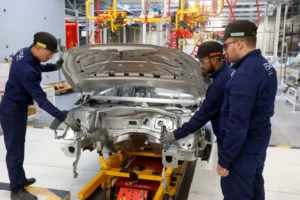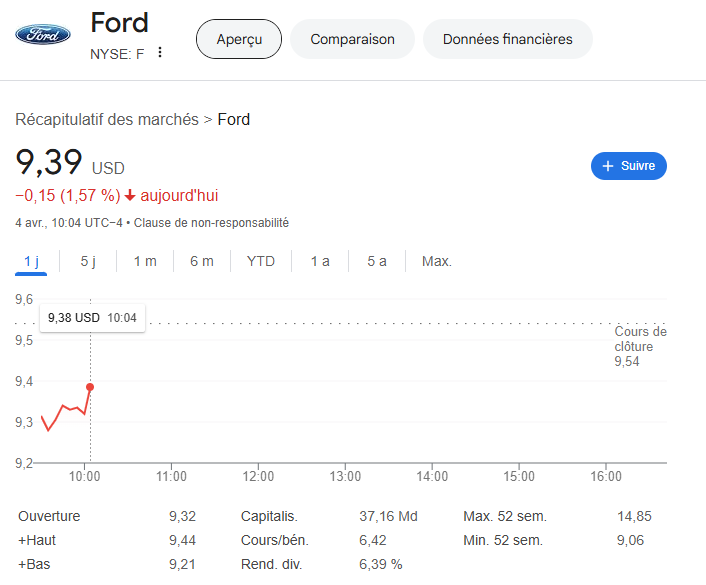The global perception of Arab economies is often dominated by oil and gas exports. However, a transformative shift is underway as several Arab nations carve out niches in advanced manufacturing and industrial sectors. This article delves into how Morocco, Jordan, Saudi Arabia, and Egypt are spearheading industrial innovation and global trade beyond the confines of fossil fuel dependence. These nations demonstrate resilience and diversification, positioning themselves as formidable players in sectors such as automotive manufacturing, pharmaceuticals, and fertilizers.
The Rise of Non-Oil Exports in Arab Economies
In 2023, the total value of Arab merchandise exports reached $1.4 trillion, accounting for 5.8% of global exports. Historically dominated by energy resources, Arab exports saw a surge in 2022, influenced by the geopolitical landscape of the Russia-Ukraine war and heightened demand for oil and gas. However, as demand tapered in 2023 and prices of commodities declined, the need for economic diversification became more pronounced. Non-oil exports, bolstered by strategic policies and investments, emerged as a beacon of resilience for countries such as Morocco, Jordan, Saudi Arabia, and Egypt.
This shift signifies a broader regional effort to embrace global markets in unconventional ways, breaking away from dependency on oil revenues.
Morocco: A Rising Power in Automotive Manufacturing
Morocco has become a global hub for automotive manufacturing, driven by strategic government initiatives and robust foreign investments. The nation’s journey to becoming Africa’s leading car exporter showcases how industrial policy can transform an economy.
A Thriving Automotive Industry
By 2023, Morocco’s automotive sector had achieved record-breaking production levels, manufacturing 535,825 vehicles. Partnerships with global automotive giants paved the way for this transformation. One standout achievement is the production of electric vehicles (EVs), with Morocco’s capacity reaching 40,000 EVs annually. The government aims to increase this figure to 100,000 by 2025, according to Minister of Industry Ryad Mezzour.
Morocco has also surpassed traditional automotive exporters like Japan and South Korea to become the largest car exporter to the European Union (EU). In 2023, Moroccan car exports to the EU were valued at €15.1 billion ($16.4 billion), a 30% increase from the previous year. The country’s global automotive exports now span over 70 nations, generating $11.5 billion in revenue by October 2024.
Strategic Advantages
Several factors contribute to Morocco’s automotive success:
- Proximity to Europe: Morocco’s geographic location makes it an attractive manufacturing and export hub for European markets.
- Free Trade Agreements: Agreements with the EU, the United States, and other regions facilitate seamless trade.
- Government Incentives: Policies promoting foreign direct investment and industrial zone development bolster the sector.
Morocco’s achievements underscore how strategic industrialization can reshape economies and reduce dependence on fossil fuels.
Jordan: A Leader in Apparel and Pharmaceuticals
Jordan, a nation historically reliant on traditional industries, has emerged as a key player in apparel and pharmaceutical exports, leveraging trade agreements and industrial modernization.
Apparel: A Growth Story
Before 2000, Jordan’s presence in global apparel markets was negligible. By 2023, apparel exports reached $2.1 billion, with products shipped to over 60 countries. Agreements such as the U.S.-Jordan Free Trade Agreement were pivotal in attracting foreign investment and enabling Jordan’s access to advanced markets.
The apparel sector’s growth is highlighted by a 23.3% year-on-year increase in exports during the first seven months of 2023, reaching $1.34 billion.
Pharmaceuticals: A Pillar of Economic Resilience
Jordan’s pharmaceutical industry, valued at $869 million in exports in 2023, stands as one of the region’s most dynamic sectors. Companies like Hikma Pharmaceuticals have achieved global recognition, exporting to 73 markets, including the United States and the EU.
The industry’s future looks promising, with plans to expand exports to $4.17 billion and increase sector employment to 16,000 by 2033. This aligns with Jordan’s broader vision to integrate innovation and expand its global footprint.

Saudi Arabia: Advancing Pharmaceutical Manufacturing
Saudi Arabia, the Gulf’s largest economy, is leveraging its industrial base to become a leader in pharmaceutical manufacturing. The sector’s growth reflects the nation’s Vision 2030 initiative to diversify its economy.
Market Overview
The Saudi pharmaceutical market was valued at $9.4 billion in 2024, with projections to grow to $11.7 billion by 2033. In 2023 alone, pharmaceutical exports amounted to $556.6 million. Investments in research and development, coupled with the establishment of 206 pharmaceutical and medical device factories, have fueled this growth.
Key Players
- Jamjoom Pharma: Established in 2000, the company produces high-quality branded pharmaceuticals with a market value of $2.79 billion.
- Spimaco: A regional leader with a market value of $1 billion and a presence in 16 countries.
- Avalon Pharma: Known for its innovative products, Avalon exports to 15 countries across the Middle East, North Africa, and Europe.
Saudi Arabia’s commitment to reducing its reliance on imports—with localization efforts decreasing pharmaceutical imports from 80% in 2019 to 70% in 2023—is a testament to its industrial transformation.

Egypt: A Fertilizer Export Powerhouse
Egypt has capitalized on its natural gas reserves and strategic investments to become a global leader in fertilizer production. The sector’s evolution showcases how resource-driven industries can transition to value-added manufacturing.
A Strategic Industry
Egypt’s fertilizer exports skyrocketed from $77 million in 2007 to $2.46 billion in 2023. The country’s strategic expansion, supported by modernized infrastructure and new factories, has enabled it to meet growing global demand.
Key markets for Egyptian fertilizers include Europe, India, and Turkey. Notably, exports to these regions surged by 20% year-on-year, reaching $6 billion between January and August 2024.
Future Prospects
Industry leaders project exports to exceed $8.5 billion by the end of 2024. This growth aligns with Egypt’s broader economic diversification strategy, enhancing its competitiveness in global markets.


A Blueprint for Diversification
The experiences of Morocco, Jordan, Saudi Arabia, and Egypt illustrate how strategic planning and investment can enable Arab nations to thrive in industries beyond oil and gas. By prioritizing innovation, fostering partnerships, and leveraging natural and geographic advantages, these countries are redefining their economic narratives.
As the global economy continues to evolve, the success stories of these nations offer a blueprint for others seeking to diversify and build resilient, sustainable futures.




